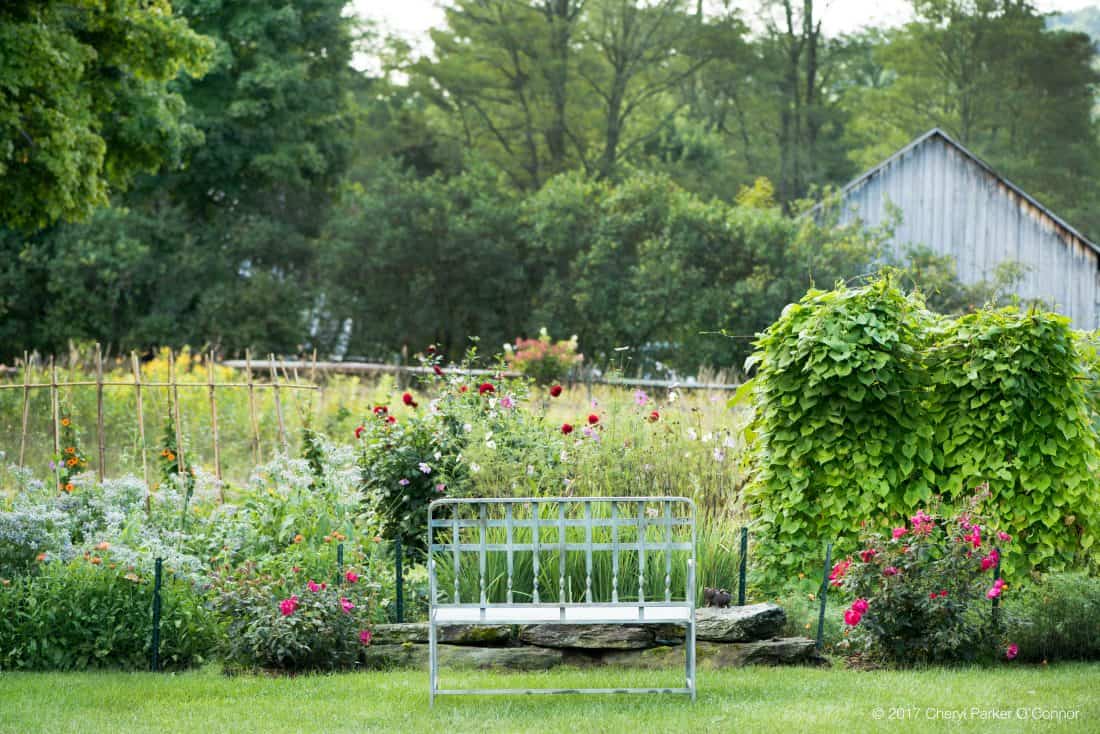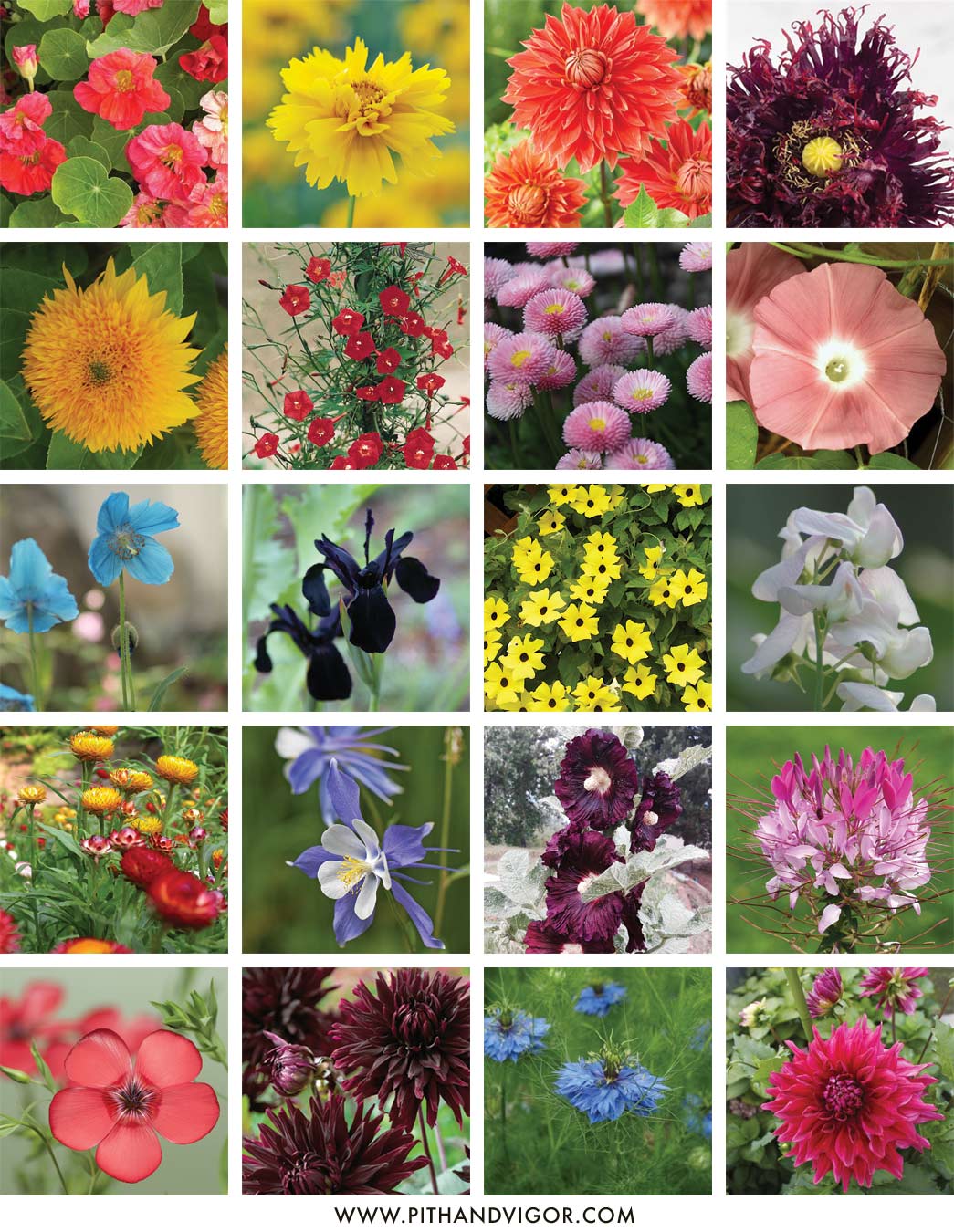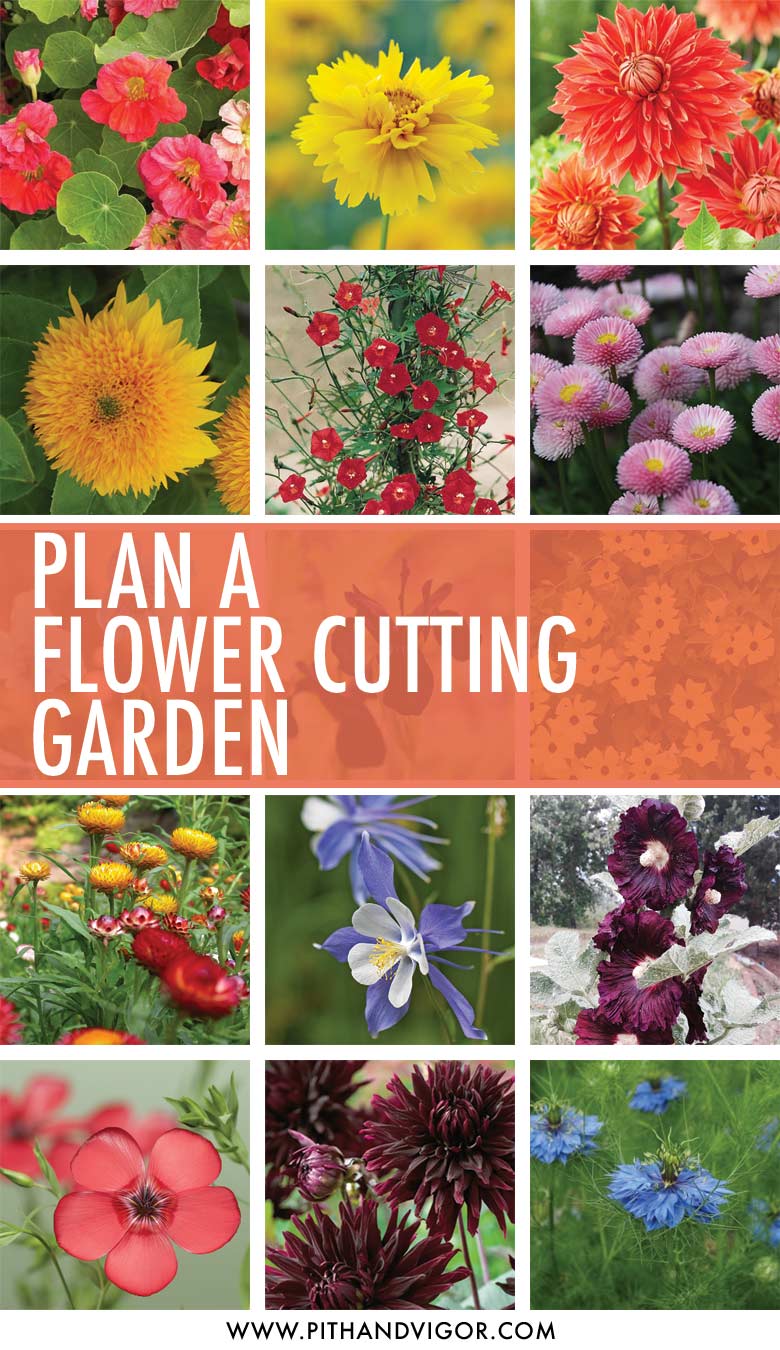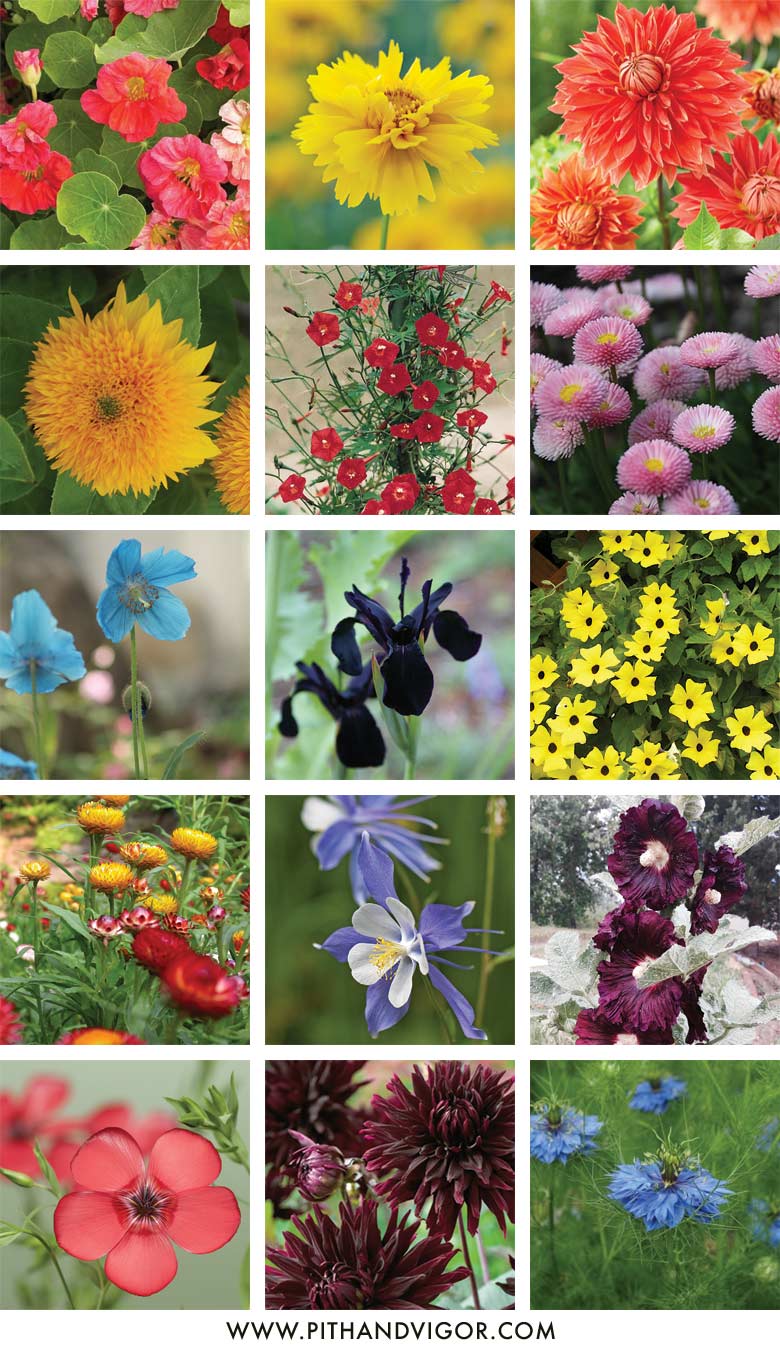I’ve grown a cutting garden for three years. Every year, I dream of sitting down on a cold, wintry day by the fire with catalogs and a sketchpad to lay out my garden plans. Yet somehow, each year, winter comes and goes, and I find myself standing in my local nursery planning in their space instead of my own. This year was different; I was finally able to plan and grow cut flowers from seed.
There is something ironic about putting together a cutting garden. Its purpose is to be constructed and then deconstructed by cutting the flowers in order to create bouquets. Sometimes, to benefit from the assembly, we must disassemble.

How to plan a seed-grown cut flower garden
I like to plan my cutting garden with a few goals in mind. First, it’s about experiencing the amazing alchemy of seed to bloom. Additionally, I want to add to our landscape in the summer and grow flowers to cut for our home and to share with others. It is a bonus that it gives me something to photograph, too.
To grow cut flowers from seed, first choose a sunny spot with well-draining soil. (Most cut flowers will require full sun, so don’t rationalize planting them in a less-than-ideal place; you won’t get the results you hope for.)
Sow seeds at the recommended depth and spacing (that information is always on the seed packet), then keep the soil consistently moist. The definition of moist is just that – not flooded or soaked, but just damp. If the site is really sunny and you have no other coverage (like other plants or mulch of some sort), you will find it more difficult to keep the spot simply moist. This is why you will want to consider things like drip irrigation systems and ways to keep the moisture in the soil while your plants take root.
Once seedlings emerge, thin them out to prevent overcrowding. This is always hard to do – they all have such promise! – but it is important and you must make the cut. Fertilize regularly (you can do this with good compost spread over the top of the soil) and provide support for tall varieties.
Once it comes time to cut the flowers – don’t hesitate to cut them regularly – many of these plants will respond to harvesting their blooms by creating even more flowers than they would have if you had not cut them – so regularly cut your flowers to encourage continuous flowering.
Define a Color Scheme for your Cutting Gardens
With my purpose defined, I am always careful to choose varying heights of flowers and a color scheme.
The catalogs are filled with so many choices, but I pick flowers that I find uniquely interesting and intriguing. If I have set out some guidelines for myself (for example, needing a variation of heights or of certain colors), it is always easier to decide what plants I will try another year.
Once my plan in place, I’m excited to observe this living piece of art molding itself throughout the summer and into early fall.
I’ve been reading about preparing each seed for planting. Some are planted directly in the ground, while others will need to start in pots in April.
I’ve scheduled dates on my calendar to order seeds -it is helpful to add dates to your calendar for garden chores that need future attention. It’s good the buy early – so many varieties sell out fast.
Circle dates on the calendar to plant indoors, as well as the likely time – based on last frost dates – that you will be able to plant outdoors.
I’ll also need to check if I have enough bamboo and twine to create the bamboo trellises.
The final steps include weeding the beds ahead of planting the seeds or seedlings. This is important to ensure the seeds get a head start. I’m looking forward to reaping the rewards.
This year, I feel more accomplished than I have any other year. In assembling this coming year’s cutting garden, I’ve been able to rely on lessons learned from the last few seasons. It feels good to have some confidence gained from experience, and I hope you find this selection useful.
It is a particularly good list for those of you who live in northern climates.
I know during the cold, dark days of New England’s winter, this garden will keep me looking forward to my favorite season of all – summer, with all that blooms and inspires me.
-Cheryl
Plant List for Easy Cut Flowers from Seed
Comprehensive lists of cut flowers with pictures can be found on various gardening websites and floral arrangement guides. But this resource provides a visual reference for popular flowers that are best grown from seed – a much more affordable way to create a garden. There are no roses, lilies or tulips on this list – those are all propagated in more intensive ways. The simple seed is all you need to grow all of these unique varieties.

Best cut flowers from seed – Row 1
Match the cut flowers images and names below:
Mounding Nasturtiums Cherries Jubilee – (Tropaeolum majus). The bright red color is not traditionally seen in Nasturtiums.
Coreopsis Double Sunburst (Coreopsis lanceolate) – Easy to grow even in poor soils, this plant sports blooms all season and generally has an attractive, sunny disposition.
Parkland Glory Dahlia – A burst of orange sunshine in my garden, I dig up the tubers in the fall, store them for the winter and replant them every spring.
Black Swan Poppy – (Papaver somniferum) – This black/burgundy poppy’s fun petals are texturally unusual.
Best Cut flowers to grow from seed – Row 2
Teddy Bear Sunflower (Helianthus annuus) – My favorite sunflower has many, many petals that resemble a very huggable puffball.
Cardinal Climber ((Ipomoea x multifida) – I grow this in memory of my father-in-law because we always think of him when we see a cardinal (bird) – and the hummingbirds are attracted to it.
Rose Ball English Daisy (Bellis perennis) – The pure sweetness of this flower is only part of the reason to love it. The blooms also are among the largest of daisies – growing to as much as 6” in diameter.
Mounding Nasturtiums Cherries Jubilee – (Tropaeolum majus). The bright red color is not traditionally seen in Nasturtiums.
Best Cut flowers to grow from seed – Row 3
Himalayan Poppies – These are considered very difficult to grow – requiring the exacting conditions to germinate and thrive. They are so beautiful that I am willing to give them a try. This is an unusual cut flower – so if you are successful – make sure you enjoy it, photograph it, enter it into a local competition. You know – all the things proud plant parents do.
Black flowered Siberian Iris – These look like velvet and are the most elegant plant in my selection.
Black-eyed Susan Vine – This is a tropical plant that is often growing as an annual outside of its native region. It will quickly cover a trellis in one season.
Royal White Sweet Pea – Sweet peas have a beautifully delicate fragrance and will also vine through a garden and up a trellis.
Best cutting flowers to grow from seed – Row 4
Rose Ball English Daisy (Bellis perennis) – The pure sweetness of this flower is only part of the reason to love it. The blooms also are among the largest of daisies – growing to as much as 6” in diameter.
Rocky Mountain Blue Columbine (Aquilegia coerulea) – The details of this native Columbine have always intrigued me, and the foliage of this variety resembles a maidenhair fern.
Hollyhock the Watchman (Alcea rosea) – I love the rich and deep color of this variety of Hollyhocks, and they are a very popular cottage garden plant.
Spider Flower (Cleome hassleriana) – In flowers and in life, I am attracted to whimsical things. Also known as grandfather whiskers, these spindly blooms are eye-catching and unique.
Good cut flowers to grow from seed – Row 5
Scarlet Flax (Linum grandiflorum rubrum) – It is a profusion of delicate petals and a brilliant red color. Unfortunately, the blooms only last a day, so it won’t be a great flower for bouquets, but it will enliven my cutting garden.
Black Cat Dahlia – These dark beauties add mystery and excitement to the garden and bouquets.
Love In A Mist (Nigella damascene) – The seed pod is just as interesting as the ethereal blue flowers. Both the flower and pod are great in arrangements.
Deep Red Dahlias (I suggest Dahlia Boom Boom Red for a laciniate petal or Dahlia Barbarosa, a semi-cactus variety) – Mine were a gift from a friend’s garden. I love a deep red color in my arrangements.
Share This Post:


Plant Finder:
Seeds can be found at Renee’s Garden, Swallowtail Gardens, Botanical Interests, and Baker Creek Seeds. Dahlias can be purchased at American Meadows, Longfield Gardens, Holland Bulb Farms, and Big Dahlias.
More PITH + VIGOR stories about Cutting Gardens:
Not sure where to buy your seeds – Check out this post: Really Great Heirloom Seed Companies (USA and Canada)
Images courtesy of Renee’s Garden, Swallowtail Gardens, Botanical Interests, Baker Creek Seeds. American Meadows, Longfield Gardens, Holland Bulb Farms, Big Dahlias. Morgaine, CC BY – 2.0
+comments+